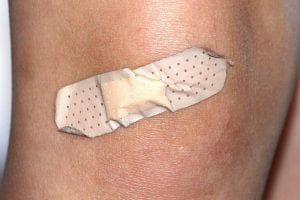According to a recent article, researchers reported their findings from a new study that looked at the bleeding patterns and characteristics in infants and toddlers with von Willebrand disease (VWD).
von Willebrand Disease
Named after the Finnish physician, Erik von Willebrand, who first described the condition in 1925, von Willebrand disease (vWD) is a bleeding disorder that affects the blood’s ability to clot. Although there is no cure for vWD, treatment can control symptoms and help avoid problems. People with vWD may bleed excessively and/or for a longer period of time because their blood doesn’t have enough of a protein called von Willebrand factor (VWF), or that protein doesn’t function as it usually does. VWF serves two main functions, it:
- Acts as a glue to hold platelets together (in the form of a clot) to seal a hole in a blood vessel
- Carries the essential blood-clotting factor, called factor VIII, in the bloodstream
Because of this, people with vWD often bruise easily, have frequent, long-lasting nosebleeds, and experience abnormal bleeding following injury, surgery, or dental work. There are 3 types of vWD, based on the amount of von Willebrand factor that is produced:
- Type 1: the mildest and most common (75% of people with vWD have this type), characterized by lower than normal levels of VWF
- Type 2: medium level of severity, the amount of von Willebrand factor in the blood is often normal but it doesn’t work properly
- There are 4 subtypes of type 2 von Willebrand disease, and it is important to get an exact diagnosis because treatment differs between them:
- Type 2A: the most common subtype, it typically involves normal amounts of the VWF protein, but there’s a defect in that protein that keeps blood platelets from binding together well
- Type 2B: the second most common subtype, it is characterized by VWF binding to platelets in the bloodstream instead of at the site of the injury to the blood vessel. Large bundles of platelets are removed from the body’s circulation, which can cause thrombocytopenia, a shortage of platelets
- Type 2N: much rarer subtype, VWF works normally with platelets, and the platelets clot at the injury site, but they fail to transport factor VIII into blood circulation, resulting in an overall VWF deficiency that can be mistaken for hemophilia A
- Type 3: the most severe and rarest form, people with type 3 vWD have very little to no VWF in their blood
- There are 4 subtypes of type 2 von Willebrand disease, and it is important to get an exact diagnosis because treatment differs between them:
Symptoms:
In many cases, the symptoms of vWD are absent or so mild they aren’t recognized as symptoms. This can make diagnosing vWD very difficult. Abnormal bleeding is the most common symptom, and it may present as:
- Frequent, long-lasting, and heavy nosebleeds that are hard to stop
- Bleeding from the gums
- Increased/longer menstrual flow
- Excessive bleeding from a cut or following a tooth extraction or other dental procedure
- Blood in stools or urine
- Long-lasting bleeding from shaving or other similarly minor injury
The Study
Using the US Hemophilia Treatment Center Network, researchers used the data of patients younger than 2-years-old with vWD. The data they looked at included details about their birth, their diagnosis, their bleeding episodes, and their patterns of complications.
Birth
In total, 105 patients were studied with 58% being male. The most common form of vWD was Type 1 with 63% of patients, followed by Type 2 with 28%, and finally Type 3 with 9%. It was also discovered that a majority (86%) were delivered full term and at a normal weight (82%) and normal length (89%). 63% of the births occurred vaginally, and the mothers who were known carriers of the vWD often chose an elective cesarean section.
Diagnosis
On average, patients were diagnosed at 7 months old. If a patient had a family history of vWD they were more likely to have an earlier diagnosis, especially since a family history with a bleeding disorder is what led to diagnostic testing for a lot (68%) of patients.
Bleeding Events
70% of patients experienced a bleeding event, most of which were in their first year of life (68%), and some were even before they turned 6 months old. The initial bleeding either started in the oral mucosa (the mucous membrane lining or “skin” inside of the mouth) (68%), were related to circumcision (12%), or were intracranial or extracranial bleeds (10%).
Treatment
More than half of the patients in the study (64%) were given treatment. One treatment that was used by 47% of patients included plasma-derived von Willebrand factor VIII concentrates. Another used by 32% of the patients was aminocaproic acids. Finally, 14% of patients had intravenous or intranasal desmopressin.
Conclusions
This study expanded the knowledge around infants and toddlers with vWD. The research was able to determine that family history plays a big part in diagnosis, cesarean sections are a more common type of birth for those with vWD, there are elevated rates of preterm births along with low birth rates, and there are patterns of bleeding sites within patients in the study.







